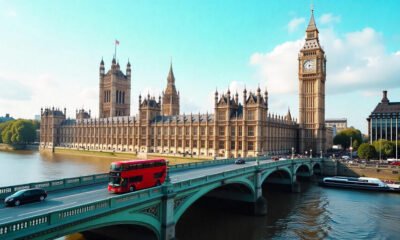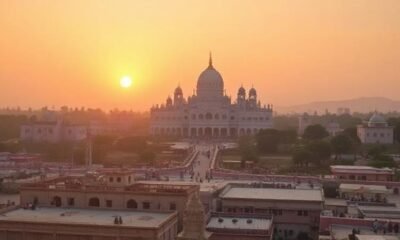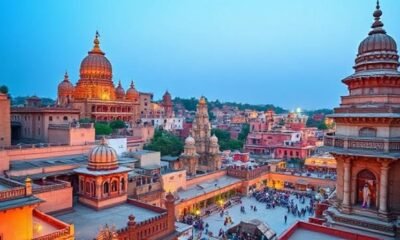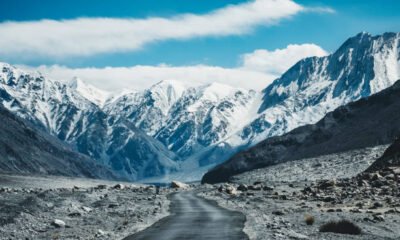Travel Guides & Articles
India Struggles to Strengthen Tourism Economy as Rajasthan’s Inefficient Budget Use Stalls Crucial Projects Across the State

Published on
August 20, 2025
India’s tourism growth is being undermined by Rajasthan’s inability to utilise its allocated funds, with spending shortfalls reaching nearly 50 percent in recent years. Despite being one of the country’s most popular heritage destinations, Rajasthan’s tourism department has repeatedly failed to execute development projects and promotional campaigns on time. Factors such as weak planning, prolonged approval processes, lack of accountability among officials, and delays in fund releases have left critical schemes incomplete, weakening both infrastructure growth and global promotion efforts for the state’s tourism sector.
The tourism sector in Rajasthan, one of India’s most prominent cultural and heritage destinations, has been facing challenges not only in terms of promoting attractions but also in effectively using its allocated funds. Recent figures reveal that the state’s tourism department has repeatedly failed to utilise its approved budgets, with gaps in spending reaching up to half of the sanctioned amount during certain years.
Budget Allocation Versus Expenditure
In the financial year 2020–21, the state government sanctioned Rs 120.46 crore for tourism-related projects, which included development initiatives, publicity campaigns, and promotional activities aimed at boosting visitor numbers. However, this figure was reduced during the revised estimate stage to Rs 80.78 crore. Despite the revised target, actual expenditure stood at only Rs 48.45 crore, reflecting a utilisation rate far below expectations.
Such shortfalls are not limited to a single year. In several instances, the tourism department has been unable to exhaust even the reduced estimates, raising concerns about systemic inefficiencies and the inability to execute projects as planned. For a state that relies heavily on tourism for both revenue and employment, these figures highlight a critical gap between vision and implementation.
Causes Behind Underutilisation
Officials within the department attribute the situation to a range of challenges. One of the primary reasons cited is inadequate planning and designing at the initial stages of projects. Poorly structured proposals have often led to delays, as revisions and approvals consumed significant time. This lack of preparedness has left several development schemes either incomplete or entirely unexecuted.
The extended approval process has also been highlighted as a major factor. Tourism projects in Rajasthan require multiple layers of clearance, which often results in prolonged delays. According to departmental sources, the bureaucratic system, combined with a lack of urgency among officials, has further slowed down the pace of implementation. In many cases, delays are left unquestioned, with accountability rarely enforced.
Internal Challenges and Lack of Accountability
Insiders suggest that the absence of strict monitoring mechanisms has allowed delays to become routine. The culture of not questioning missed deadlines or holding officials responsible has created an environment where projects remain stagnant for months or even years. While officials often cite the need for transparency and due diligence as reasons for extended timelines, many within the sector believe that lack of proactive effort is the underlying cause.
Interestingly, the practice of issuing show-cause notices for missed deadlines is rare within the tourism department. This has further reduced the incentive for timely completion of projects, leaving critical initiatives underfunded and underutilised.
External Constraints and Financial Bottlenecks
Apart from internal inefficiencies, external factors have also contributed to the underutilisation of funds. In certain instances, the finance department’s delayed release of funds has hampered the progress of approved schemes. Without timely disbursement of resources, even well-prepared projects face hurdles in execution. Industry stakeholders argue that while planning and design flaws are significant, financial bottlenecks compound the issue and ultimately slow down Rajasthan’s tourism growth strategy.
Impact on Rajasthan’s Tourism Growth
Rajasthan is known globally for its palaces, forts, desert landscapes, and vibrant cultural heritage. Tourism forms a key pillar of the state economy, supporting local communities and contributing substantially to revenue. The inability to efficiently utilise allocated budgets directly affects infrastructure development, destination promotion, and international marketing campaigns.
Missed opportunities in promoting tourism not only limit the state’s visibility in global markets but also reduce its competitiveness compared to other destinations that aggressively invest in branding and infrastructure. For local businesses that rely on visitor footfall, such inefficiencies translate into fewer opportunities for growth.
Looking Ahead
Experts believe that in order to bridge this gap, the state tourism department must focus on better project planning, faster approvals, and stronger accountability mechanisms. Introducing time-bound targets, regular reviews, and stricter monitoring could ensure that funds are utilised effectively. Coordination with the finance department for timely release of resources will also be crucial to prevent projects from stalling midway.
India’s tourism budget is under strain as Rajasthan fails to use nearly half of its sanctioned funds, leaving development and promotion projects incomplete.
For a state with immense tourism potential, effective use of financial resources remains critical. As Rajasthan continues to attract both domestic and international travelers, ensuring efficient budget utilisation will determine whether the sector achieves its long-term growth ambitions.
Travel Guides & Articles
Heavy Rains Lash Gurugram, Noida, Ghaziabad; Schools, Offices Closed, Airlines Issue Travel Advisory
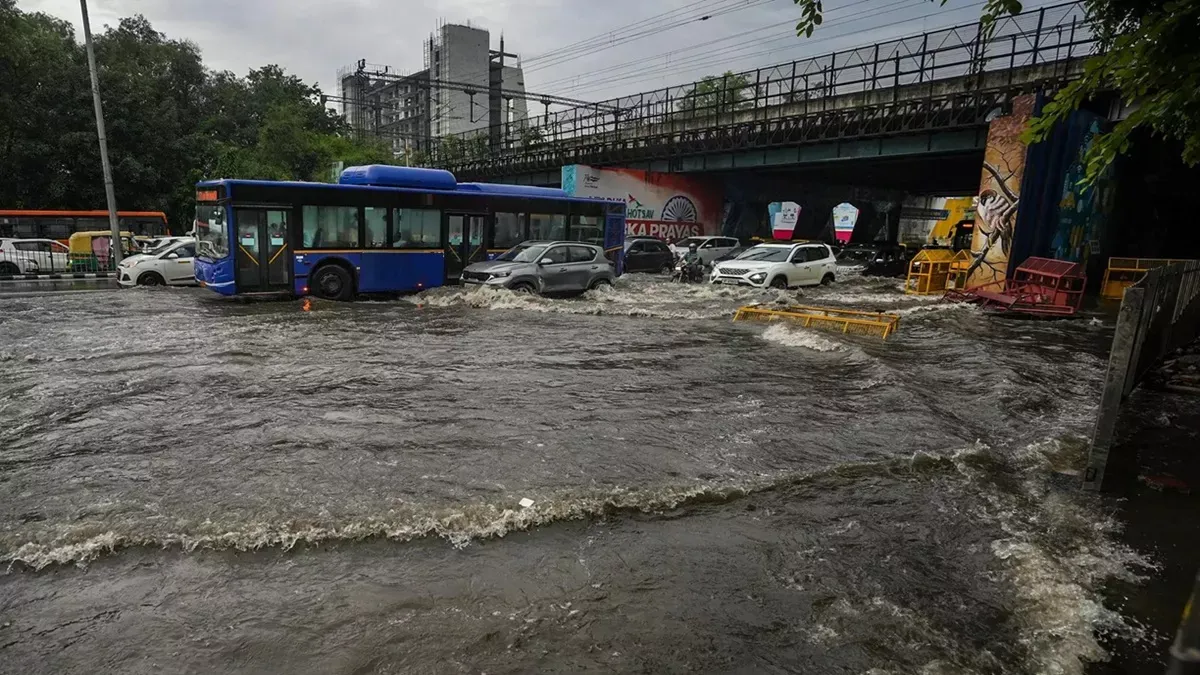
Delhi-NCR Weather: The India Meteorological Department (IMD) has issued a heavy rainfall alert for Delhi-NCR, including Noida, Gurugram, and Ghaziabad, as relentless monsoon showers continue to lash northern India. Today’s weather forecast for Delhi warns of intense downpours throughout the day.
02/09/2025: 05:25 IST; Light to moderate rainfall is very likely to occur at Barwala, Jind, Mahendargarh, Rewari, Narnaul, Bawal, Nuh (Haryana) Saharanpur, Deoband, Muzaffarnagar, Bijnaur, Pilakhua, Hapur, Gulaoti, Sikandrabad, Bulandshahar, Shikarpur, Pahasu (U.P.) Bhiwari,
— RWFC New Delhi (@RWFC_ND) September 1, 2025
In Gurugram, heavy rains have triggered severe waterlogging and massive traffic jams, with reports of a 7-kilometre-long traffic snarl. The District Disaster Management Authority (DDMA) has issued an orange alert for the city, advising the closure of all schools, colleges, and offices, and encouraging work-from-home arrangements.
Meanwhile, Noida and Ghaziabad are also experiencing heavy rainfall. The IMD’s weather alert extends to Himachal Pradesh and Uttarakhand, where a red alert has been issued due to the risk of flash floods and extremely heavy rainfall. Punjab and Jammu & Kashmir remain under an orange warning. As per today’s forecast, schools and offices in affected regions are expected to remain closed to ensure public safety.
Travel Advisory
🚧⛈Heads up, #Delhi travellers!
Due to today’s downpour, several roads across #Delhi are currently blocked or experiencing slow movement.
Please allow extra time, take an alternate route if possible, and check your flight status on our website or app before…
— IndiGo (@IndiGo6E) September 1, 2025
Air India also issued a passenger advisory: ” Rain may impact flight operations to and from Delhi today. Please check your flight status here https://airindia.com/in/en/manage/flight-status.html before heading to the airport and allow extra time for your journey to the airport.”
Rain may impact flight operations to and from Delhi today.
Please check your flight status here https://t.co/5vemTROi62 before heading to the airport and allow extra time for your journey to the airport.
— Air India (@airindia) September 1, 2025
Delhi-NCR Rains: Avoid These Routes In Gurugram
Many parts of Gurugram experienced severe waterlogging on Monday following hours of continuous rain. Commuters reported flooding at major junctions including Hero Honda Chowk, Sohna Road, Narsinghpur stretch on NH-48, IFFCO Chowk, and Sectors 29 and 31. Traffic crawled along Golf Course Road and MG Road due to knee-deep water. Authorities have urged residents to avoid flood-prone areas during peak hours and to opt for alternate routes or work-from-home options where possible.
Delhi-NCR Rains: Are Schools, Offices Open In Gurugram Today?
Gurugram recorded over 100 mm of rainfall between 3 PM and 7 PM on September 1. In response to IMD’s orange alert, the District Disaster Management Authority has directed the closure of all offices on Tuesday (September 2), advising businesses to allow employees to work from home.
#Advisory – District Disaster Management Authority, Gurugram ⚠️
🌧️ Gurugram recorded over 100 mm of rainfall today (01 Sept, 3 PM – 7 PM).
📢 IMD Forecast: Orange Alert – Heavy to Very Heavy Rainfall on 02 Sept 2025.👉 Instructions issued:
All corporate & private offices in… pic.twitter.com/0XoVqXdbEJ
— DIPRO Gurugram (@diprogurugram1) September 1, 2025
All schools in the district have also been advised to conduct online classes on Tuesday, September 2, 2025.
Travel Guides & Articles
Modi and Putin affirm special relationship as India faces steep US tariffs over Russian oil imports : NPR
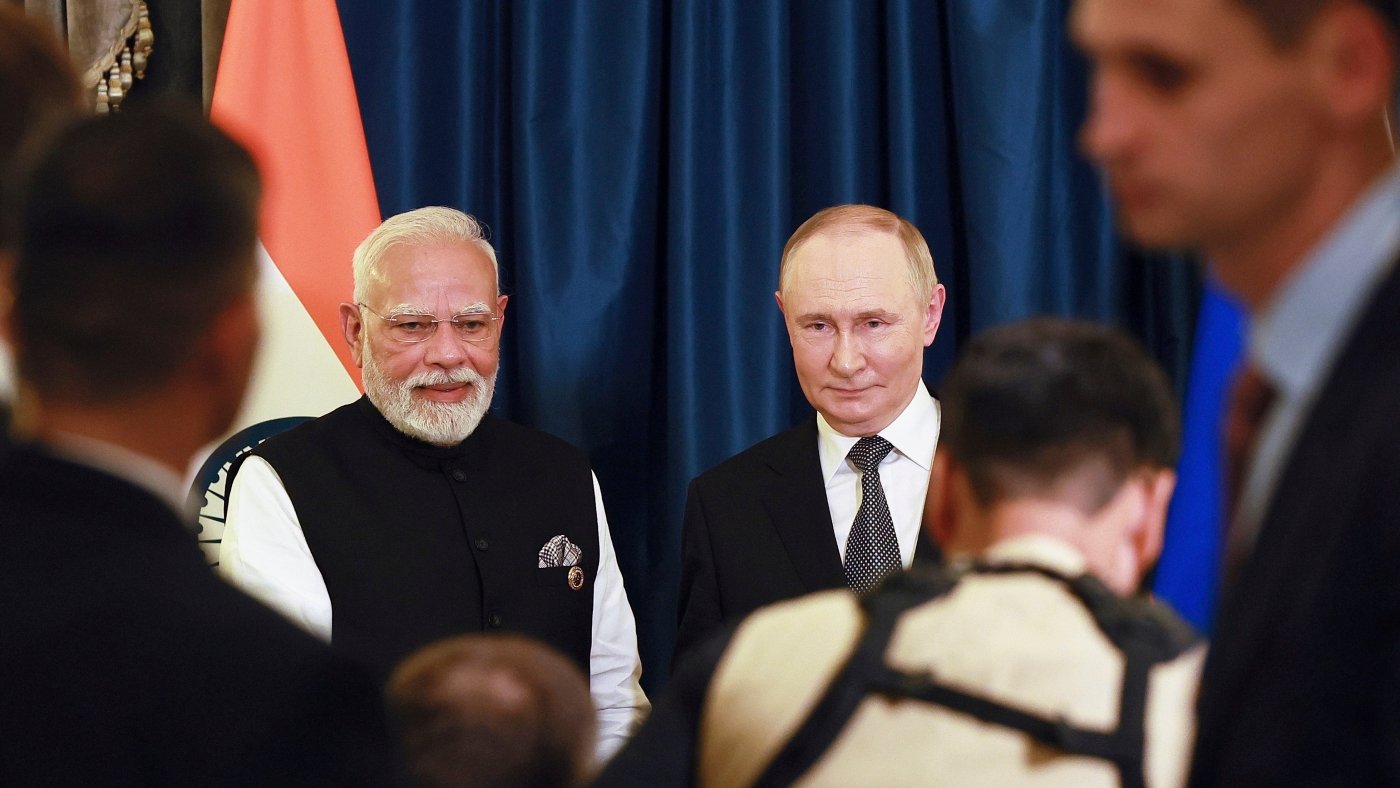
Indian Prime Minister Narendra Modi, left, and Russian President Vladimir Putin pose during their meeting on the sidelines of the Shanghai Cooperation Organization (SCO) summit in Tianjin, China, Monday, Sept. 1, 2025.
Vladimir Smirnov/AP/Pool Sputnik Kremlin
hide caption
toggle caption
Vladimir Smirnov/AP/Pool Sputnik Kremlin
TIANJIN, China — Indian Prime Minister Narendra Modi and Russian President Vladimir Putin met on the sidelines of a regional summit in China on Monday in a show of deepening ties when New Delhi’s relations with Washington are strained over the purchase of Russian oil.
The two leaders held talks after attending the key session of the Shanghai Cooperation Organization gathering in the port city of Tianjin, where discussions focused on regional stability, bilateral trade and energy cooperation.
In his remarks to open the talks, Modi termed the partnership with Moscow as “special and privileged.” Putin addressed Modi as a “dear friend” and hailed Russia’s ties with India as special, friendly and trusting.
“Russia and India have maintained special relations for decades. Friendly, trusting. This is the foundation for the development of our relations in the future,” Putin said.
Putin plans to travel to India in December for the 23rd India-Russia annual summit, according to his foreign affairs adviser, Yuri Ushakov.
Relationships on display
Modi used the SCO meeting to welcome the initiatives aimed at halting the conflict between Russia and Ukraine and called on the stakeholders to move forward constructively.
“To end the conflict soonest and establish peace permanently, we need to find out a way. It’s a call of the entire humanity,” Modi said.
Putin was accompanied by a large delegation that included top government officials. Russian state media reported that before sitting down for their formal meeting, Putin and Modi spoke one-on-one for almost an hour in a Russian-made limousine that Putin regularly takes on foreign trips.
Moments before the leaders lined up for a group photo, Modi was seen clasping Putin’s hand with the gusto of an old friend, bursting into his trademark hearty laughter. The moment was infectious as Putin grinned and chuckled, while Chinese President Xi Jinping gave a measured smile. The trio, ringed by watchful interlocuters, chatted animatedly for a few seconds.
Modi met Xi ahead of the opening of the summit Sunday and the two leaders pledged to resolve their border differences and bolster cooperation.
Washington pushing together China, Russia and India
Monday’s bilateral meeting between Modi and Putin carried added significance by coming days after U.S. President Donald Trump imposed an additional 25% tariffs on Indian imports, raising the total duties to a steep 50%, in retaliation for India’s continued purchases of discounted Russian oil.
Washington has repeatedly warned New Delhi against buying Russian crude, which it said was partly keeping Moscow’s revenues afloat to fund the Ukraine war. India has defended its imports as essential for meeting the growing energy needs of its 1.4 billion people.
Analysts said Trump’s steep tariffs and the tone coming from the White House have pushed New Delhi closer to China and Russia.
“While India-China reengagements started much before Trump, his policies are accelerating a process whereby India seems to be working much more closely with China and Russia to push back against economic unilateralism it is witnessing from the U.S.,” said Harsh Pant, vice president of foreign policy at New Delhi based think tank the Observer Research Foundation.
Modi travelled to Russia twice last year. The first was a visit to Moscow for talks with Putin in July, which was his first trip to Russia since the full-scale invasion of Ukraine by the Kremlin’s forces in February 2022. He then traveled to Kazan in October for the summit of the BRICS bloc of developing economies.
Trump’s reaction
As Xi, Putin and Modi showed extraordinary unity, Trump on Monday continued to jab at New Delhi.
As the summit wrapped up, Trump charged in a social media post that historically the U.S.-India trade relationship “has been a totally one sided disaster!” Trump also bristled about India surging its Russian oil purchases and signaled no trade deal with New Delhi is in sight.
“They have now offered to cut their Tariffs to nothing, but it’s getting late,” Trump said in the posting on his Truth Social platform. “They should have done so years ago. Just some simple facts for people to ponder!!!”
SCO nations share a history of business partnerships
Russia has had strong ties with India since the Cold War, and New Delhi’s importance as a key trading partner has grown since the war between Moscow and Ukraine.
China and India have become key buyers of Russian oil after the West shunned Russian exports to punish Moscow.
India historically bought most of its crude from the Middle East, but the world’s third-largest crude importer after China and the U.S. has started buying Russian oil available at discounted rates. Russia now accounts for around 37% of India’s total oil imports, according to analysts and Indian officials.
Trade between India and Russia has sharply increased in recent years, reaching a record $68.7 billion in the 2024-25 financial year. Imports from Russia reached around $64 billion and exports from India totaled about $5 billion, according to Indian government data.
The two nations aspire to bolster trade to $100 billion by 2030.
Modi’s meeting with Putin underscored New Delhi’s stance that India prized its old and reliable strategic partners and has sufficient strategic autonomy in its foreign policy to maintain and strengthen its multi-dimensional partnership, said Sreeram Sundar Chaulia, an international affairs expert at New Delhi’s Jindal School of International Affairs.
At the same time, the Indian government hopes the present rough weather between India and the U.S. is a temporary aberration, Chaulia said.
“Then, India can return happily to having the Russian cake and eating the American pie as part of its multi-alignment strategy,” Chaulia said.
Travel Guides & Articles
Fatehpur Sikri, India, travel guide: Seven highlights to see

Seven wonders within Fatehpur Sikri, India
This monumental Mughal capital 37 kilometres outside Agra was founded in 1571 but lasted scant decades. The magnificently mournful ruins are one of India’s most underrated sights.
1 Make a grand entrance through Victory Gateway
As you lurch out of Agra, dodging cars and camel carts, your first sight of this ruined city is an immense hilltop gateway, one of the world’s biggest, wobbling like a mirage in the heat. Victory Gateway was built in 1602 from red sandstone and white marble to commemorate Emperor Akbar’s military triumphs, although its Persian inscription warns the world doesn’t last. This by itself qualifies as a mighty monument, and the views are splendid.
2 Pause in admiration inside the mosque
Step through the gateway into the courtyard of the Friday Mosque and you get the first impact of this tremendous ensemble. Everything is built of red sandstone, everything outsized, and yet the decorative detail – window frames, balconies, roof brackets – wonderfully carved. The mosque is one of India’s finest and largest and centres on the tomb of a Sufi, inlaid with mother-of-pearl. Local women come to tie strings on the marble lattice in hope of being granted children.
3 Check out the architecture in the Audience Hall
This gloriously startling building in the royal quarter is where Akbar consulted advisers. The Diwan-i-Khas has wall recesses that served as bookshelves for royal documents and texts. However, your eyes will surely be on the enormous and wildly ornate octagonal pillar of the main hall, which rises from the centre of the room like the handle of an umbrella and props up an elevated walkway that resembles the balcony in an opera house.
4 Look up in the Imperial Treasury
Fatehpur Sikri shows wide Hindu, Islamic and Persian influences but this genius building next to the Audience Hall takes inspiration from Jain temple architecture and decorative sculpture. Stone safes are concealed in the walls, but gaze up: the brackets that hold up the ceiling are embellished with mythical elephant-headed sea monsters, said to guard treasures in the depths of the ocean. In the fields behind, don’t miss the odd-looking spiky tower erected in memory of Akbar’s beloved elephant Hiran.
5 Enjoy the faded frescoes in Mariam’s House
The harem complex has several fine pavilions, some showing Turkish influences and others covered with depictions of swans and horses. The carvings and fretwork are so fine in places you could mistake sandstone for wood. If you’re pressed for time, head straight to Mariam’s House, perhaps the best example. As a bonus, it has bright and sometimes surreal gold-tinted frescoes – look out for the diaphanous woman riding a gigantic parrot.
6 Wander through the other imperial quarters
This is the most impressive part of Fatehpur Sikri, erupting in columns, latticed screens and elaborately decorated architectural elements, and graced with ornamental pools and clipped gardens. Persian verses loop across the emperor’s bedroom or House of Dreams, although judging from his innumerable concubines Akbar spent scant time on sleep. The pool below the elevated kiosk cooled the bedchamber. This is just one of numerous buildings that might take an hour or two to admire.
7 Close your guidebook and get lost
Fatehpur Sikri was planned in the smallest detail: servants’ quarters, lavatory blocks, fountain drainage, masonry rings to hold silk canopies for courtyard shading. Take time to inspect the detail and soak up the melancholy magnificence away from the main visitor axis. Birds wheel overhead and squirrels sun themselves on walls. In the late afternoon the sandstone turns crimson, then orange and subtle pink before the light fades on this abandoned city of lost dreams.
The writer travelled as a guest of Incredible India incredibleindia.gov.in and Malaysia Airlines malaysiaairlines.com
Sign up for the Traveller Deals newsletter
Get exclusive travel deals delivered straight to your inbox. Sign up now.
Traveller Guides
From our partners
-

 Business3 days ago
Business3 days agoThe Guardian view on Trump and the Fed: independence is no substitute for accountability | Editorial
-
Tools & Platforms3 weeks ago
Building Trust in Military AI Starts with Opening the Black Box – War on the Rocks
-

 Ethics & Policy1 month ago
Ethics & Policy1 month agoSDAIA Supports Saudi Arabia’s Leadership in Shaping Global AI Ethics, Policy, and Research – وكالة الأنباء السعودية
-

 Events & Conferences3 months ago
Events & Conferences3 months agoJourney to 1000 models: Scaling Instagram’s recommendation system
-

 Jobs & Careers2 months ago
Jobs & Careers2 months agoMumbai-based Perplexity Alternative Has 60k+ Users Without Funding
-

 Funding & Business2 months ago
Funding & Business2 months agoKayak and Expedia race to build AI travel agents that turn social posts into itineraries
-

 Education2 months ago
Education2 months agoVEX Robotics launches AI-powered classroom robotics system
-

 Podcasts & Talks2 months ago
Podcasts & Talks2 months agoHappy 4th of July! 🎆 Made with Veo 3 in Gemini
-

 Podcasts & Talks2 months ago
Podcasts & Talks2 months agoOpenAI 🤝 @teamganassi
-

 Mergers & Acquisitions2 months ago
Mergers & Acquisitions2 months agoDonald Trump suggests US government review subsidies to Elon Musk’s companies




